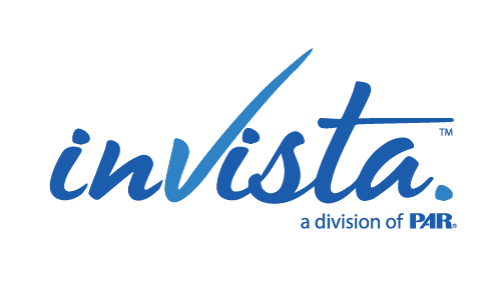Many aspects of work changed in response to the COVID-19 pandemic, including employees’ workload. In a survey conducted by FlexJobs in partnership with Mental Health America, 37% of participants reported working more hours during the COVID-19 pandemic than they had worked before. In many cases, this increased workload may result in work overload, which occurs when an employee handles too many demands, has insufficient time to complete work, or completes tasks for which they may feel unqualified.
Work overload is not a novel workplace issue; however, the pandemic has exposed a need to promote employee wellbeing, and workload is a common workplace stressor and contributor to negative wellbeing among employees. (Work underload, which occurs when an individual has too few tasks assigned to fulfill a role or completes tasks beneath their capabilities, is another employee stressor that was exacerbated by the pandemic.)
The link between work overload and wellbeing
Although the word “workload” is often used synonymously with work overload, workload is simply the amount of work required to fulfill job expectations. Of the different types of workload, overload is the most frequently talked about in the workplace. There are two types of work overload: quantitative, which occurs when the workload is too great or the time frame to complete it is too short; and qualitative, which happens when the employee doesn’t have the appropriate skills to do the job. For example, many health care professionals have seen a greater number of patients during the COVID-19 pandemic as more and more people become infected. This is quantitative overload: Treating more patients than usual is an increase to the amount of work.
In several recent studies conducted by InVista,[1][2][3] 17% of employees reported experiencing quantitative overload. This percentage is surprising, as 45% of employees reported their organization didn’t have the personnel to handle the workload. Qualitative overload could be seen at the beginning of the outbreak when there was little understanding of the virus. Health care professionals, for example, were not trained to treat a virus they had never encountered and may have felt they did not have the appropriate knowledge and skills to effectively treat patients. However, they possessed skills to treat similar conditions and provided care until more research was released. In the InVista studies, 14% of employees strongly endorsed experiencing qualitative overload—they were expected to perform tasks they were not properly trained to do.
Having too much to do and not enough time to do it takes a toll on an employee’s wellbeing. Work overload’s effect on wellbeing manifests in frustration, strain, distress, depression, anxiety, fatigue, burnout (shown through emotional exhaustion and lack of personal accomplishment), and physical symptoms like increased heart rate and susceptibility to sickness.
In a study comparing employees who experience overload, underload, and a healthy workload, overloaded employees reported the greatest percentage of negative health symptoms—nearly double compared to the other two groups! Our research tells a similar story. Of employees who expressed experiencing a high workload, only 25% showed signs of healthy overall wellbeing. That means that 75% of overworked employees are not in a current healthy state of wellbeing. The trend is reversed for employees indicating an adequate workload; 76% of these employees were in a healthy state of wellbeing and 24% of them were not.[1][2][3]
What does this mean for organizations?
This pattern extends to organizational outcomes. In our research, over 80% of overloaded employees were at risk of burnout.[1][2][3] In a survey conducted by Gallup investigating burnout, an unmanageable workload was cited as a top factor. Other factors related to burnout, like lack of manager support and unreasonable time pressure, can influence overload. Managers who are unaware of their employees’ workloads may not provide adequate support, and unrealistic deadlines often put pressure on employees’ workflow.
The good news for employers is that work overload does not lead to burnout and poor wellbeing right away. If an organization experiences a week of high demands and long hours, it is unlikely that employees will suffer long-term effects. However, if demands and persistent stress continue to grow, managers must be vigilant about assigning the appropriate amount of work and control the number of demands before they overwhelm staff.
Turnover risk—the likelihood that employees will leave the organization—may increase with a higher or unmanageable workload. More than 60% of overloaded employees were at risk of turnover, and only 21% of employees who did not express an unreasonable workload were also burned out.[1][2][3] These trends suggest that employees who believe there is more work than can be reasonably accomplished are more likely to burn out and leave the organization.
Related article: Why is a work–life balance needed?
Of course, additional factors have an influence on whether an employee will become burned out or leave the organization. However, armed with the knowledge that more at-risk employees are experiencing overload, managers have opportunities to intervene before these employees leave the organization and to prevent them from experiencing poor wellbeing.
Top ways organizations can combat work overload
- Know the load of your staff. This is easier said than done. Time tracking and project management tools are one way to quantify workload. Review job descriptions to compare the tasks required in the job to the tasks and responsibilities staff are currently working on. If tasks need to be reassigned, aligning tasks based on role will help make the workload fair.
- Hire individuals who are a good fit for the role. When someone has the appropriate knowledge and skills, they are unlikely to experience frustrations that come with not knowing how to do their job.
- Create policies to prevent understaffing. Establish indicators that signal a new hire or position is necessary.
- Prioritize (or reprioritize) goals. Clearly explain which goals and tasks are critical and which can be put on hold temporarily.
- Stop glamourizing overload. In some organizational cultures, overload is the norm, making it difficult to eradicate among both managers and employees. Instead, focus on the outcomes rather than the number of hours worked. Leaders in the organization can model the appropriate level of expectations by not replying to emails in off-hours or not commenting on employees’ amount of work hours publicly.
- Examine leadership style. Passive leaders—those who intervene when something goes wrong or take a long time to make decisions—often place a greater workload on their employees because they hold up processes or don’t acquire the resources necessary for their team to accomplish goals. A 2017 study found that overload partially explained the relationship between passive leadership and employees’ burnout, poor wellbeing, and work–family conflict. More time spent at work means less time spent with family.
- Recognize the mental health implications related to overload. Workloads affect employees differently. Create a space and foster conversations about workload’s impact on employees, and allow others to express concerns.
Best steps for employees suffering from overload
- Voice your needs. It’s possible your manager may not even know you are managing a heavy workload. When having the conversation with your manager, find common ground (e.g., “You and I both want to provide our customers with the best experience”), share the facts (e.g., “I work about 15 extra hours per week in order to meet deadlines”), and offer solutions (e.g., “Can I ask you to prioritize my projects and see which ones we could pause until next quarter?”). Unfortunately, your manager may not be understanding of your request, which may cause frustration. If that is the case, after you have voiced your concerns and have not received support repeatedly, seek other opportunities that will promote your wellbeing.
- If the workload is temporarily overwhelming, identify ways to manage and cope with the stress. Though these techniques are often a matter of personal preference, some proven strategies include mindfulness, deep breathing exercises, scheduling breaks throughout the day, and maintaining an exercise routine. Keep in mind, however, that these techniques alleviate the stress, but they do not eliminate the stressor. When employees are overloaded, their energy resources may be emptied, resulting in limited energy to engage in coping strategies. In this case, the best solution is to adjust workload to a reasonable level rather than continue to cope with the stress.
For a FREE, complete guide to mitigating the effects of workload on employee wellbeing, click here.
[1] InVista. (2020a). [Unpublished raw data on wellbeing for Beta Client 1].
[2] InVista. (2020b). [Unpublished raw data on wellbeing for Beta Client 2].
[3] InVista. (2020c). [Unpublished raw data on wellbeing for Beta Client 3].


Recent Comments